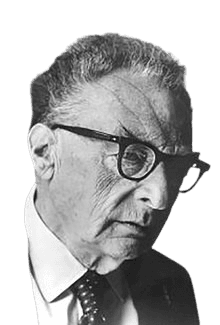Life and achievements
Early life
Roman Jakobson was born in Moscow on October 11, 1896, into a wealthy Jewish family. His father, Osip Jakobson, was an industrialist, and his mother, Anna Volpert Jakobson, was a chemist. From early childhood, Jakobson was interested in language and literature, reading Russian poets and writers. He continued his education at the Lazarev Institute of Oriental Languages and then at Moscow University, where he became more interested in linguistics. In his university years, Jakobson joined the avant-garde Russian literature movement, particularly Russian Futurism. This movement's language use was more experimental, evident in his earlier works, where he focused on how language can transcend barriers.
In 1915, Jakobson co-founded the Moscow Linguistic Circle, aiming to develop a scientific methodology for linguistic analysis. He was introduced to Ferdinand de Saussure's ideas, who suggested that language is a system of signs. In Jakobson's early work, the focus was on the structural and synchronic approach to language. The researcher was more interested in how language functioned at a particular period than its diachronic evolution. This approach later formed the basis of structural linguistics.
Legacy
Roman Jakobson's contribution to linguistic science is monumental; he is considered one of the founders of contemporary theories of language and communication and semiotics. Phonology and the theory of distinctive features are some of his most significant contributions to linguistic science, especially in explaining how phonemes operate in language systems. As a linguist, Jakobson's work was not limited to linguistics; his work impacted other fields, including anthropology, literary theory, and cognitive sciences. He has adopted six language functions, forming the basis for analyzing communication in various settings.
In literary criticism, Jakobson can also be seen in his effect on influential thinkers such as Claude Lévi-Strauss in anthropology and Roland Barthes. His ability to apply the structuralist approach not only to linguistic signs but also to cultural semiotics as culture and art, including literature, allowed for the further development of critical approaches. Jakobson's works on aphasia and language disorders also helped explain how language is processed in the brain and are still valuable for neurolinguistics today.
Jakobson's ideas are still present in modern linguistics, especially in phonology, where he developed the theories of distinctive features and universals for language structure studies. His contribution to the field of communication by emphasizing the role of language in human interaction makes him one of the greatest minds in the postmodern period.
Milestone moments
Jun 26, 1920
Czech language, Moved to Prague and founded the Prague Linguistic Circle.
Roman Jakobson went to Prague in 1920, where he became a founding member of the Prague Linguistic Circle.
This group thus evolved into a major source of ideas behind structural linguistics and contributed to the professionalization of the study of language systems.
The Prague School, which Jakobson headed, aimed at studying language as a system and especially the relations between the elements of language, such as phonemes and morphemes.
During this period, Jakobson worked with Nikolai Trubetzkoy to develop the theory of phonology.
This move and the Prague Circle formation can be considered a significant step in Jakobson's career and places him amid structural linguistics.
Apr 26, 1939
Evacuation from Europe in the Second World War
When the threat of the Nazi invasion reached Czechoslovakia, Jakobson escaped from Prague in March 1939 and moved to Denmark, then to Norway, and finally to Sweden.
In 1941, he immigrated to the United States and felt comfortable in the New York intelligentsia.
Jakobson's escape during the war not only helped him avoid death but also allowed him to continue his work in the free United States after the war.
In New York, he became part of an émigré intelligentsia, where he got acquainted with personalities such as Claude Lévi-Strauss.
This journey can be considered a turning point in his career because American scholars started to acknowledge his works.
Jul 26, 1949
Appointment to Harvard University
In 1949, Jakobson joined Harvard University as a professor and stayed there until his retirement in 1967.
In this position, he shaped a new generation of linguists, including Noam Chomsky, who was to introduce generative grammar in the linguistic theory.
At Harvard, Jakobson remained occupied with the development of phonology and the theory of linguistic universals and strengthened his positions in linguistics and the theory of communication.
Studying at Harvard, he became one of the most significant theorists of twentieth-century linguistics.
This appointment was a significant achievement in Jakobson's career, which helped him to become one of the most influential personalities in American and international academia.
Apr 26, 1951
Publication of Preliminaries to Speech Analysis
Jakobson, a co-author of C. Gunnar Fant and Morris Halle, came up with Preliminaries to Speech Analysis in 1951.
In this work, he presented his distinctive features theory, which offered a new approach to analyzing the acoustic and articulatory characteristics of phonemes.
Jakobson embraced the distinctive features theory as one of the most significant and valuable contributions to the development of linguistics, phonology in particular, and further linguistic investigations.
It also served as a foundation for the emergence of Noam Chomsky's generative grammar and other linguistic theories.
This publication marked a clear step forward in the scientific investigation of language.
